Tuberose Plant Care - Flowers, Scent, Colors, Watering, Fertilizer
Tuberose is a unique flower – not only because of its attractive appearance, but also the unworldly scent it produces. Unfortunately, it's not easy to grow, that's why it needs special care. With a bit of devotion, one can achieve very good results. Check where to plant tuberoses and learn about its characteristics. Get to know the varieties of the plant and find out whether it's for you.
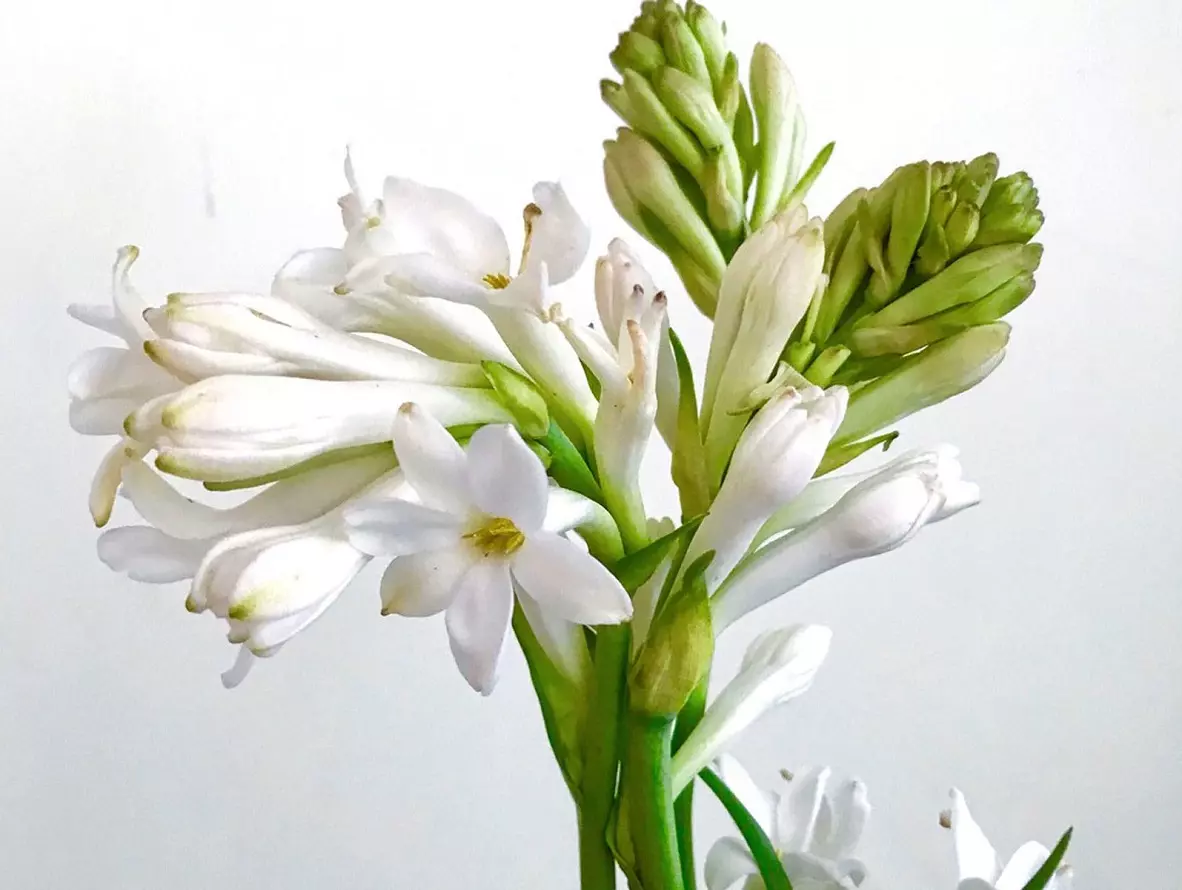
What are the origins of tuberose?
Tuberose (Tuberosa) is a plant directly associated with Mexico. That’s where this flower was originally grown by the Aztecs. It was brought from Southern America to Europe in the 16th century, and the first mentions of the plant come from Spain. Many years later, it became popular in other countries as well. Today, it’s considered a noble plant, mostly because of its high cultivation requirements.

What does tuberose look like?
The appearance of tuberose is very characteristic, thanks to which it’s hard to confuse it with any other plant. The base consists of long leaves, referred to as lance-shaped. A long stem grows among them, and develops flowers. They look like small lilies, although a lot depends on the particular variety. Some have denser flower clusters.
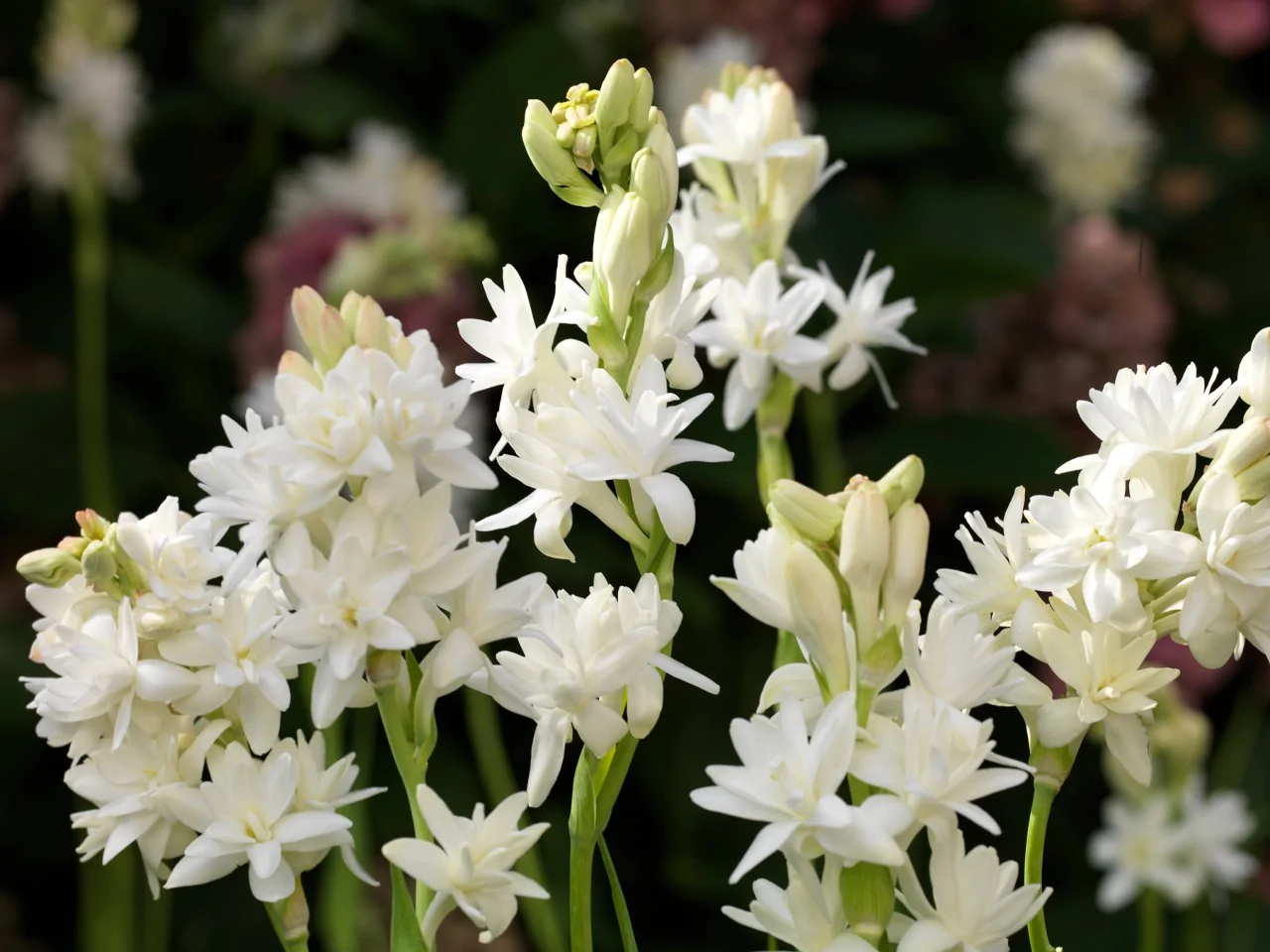
Tuberose – noteworthy varieties
There are many cultivars of tuberose in the world. They differ by their flower color and density. Some are particularly popular. The most coveted ones include:
- Common tuberose – Polianthes
- Yellow tuberose – Polianthes Yellow Baby
- Light pink tuberose – Polianthes Sensation
- Golden-yellow tuberose – Polianthes Super Gold
- Pink tuberose – Polianthes Pink Saphier
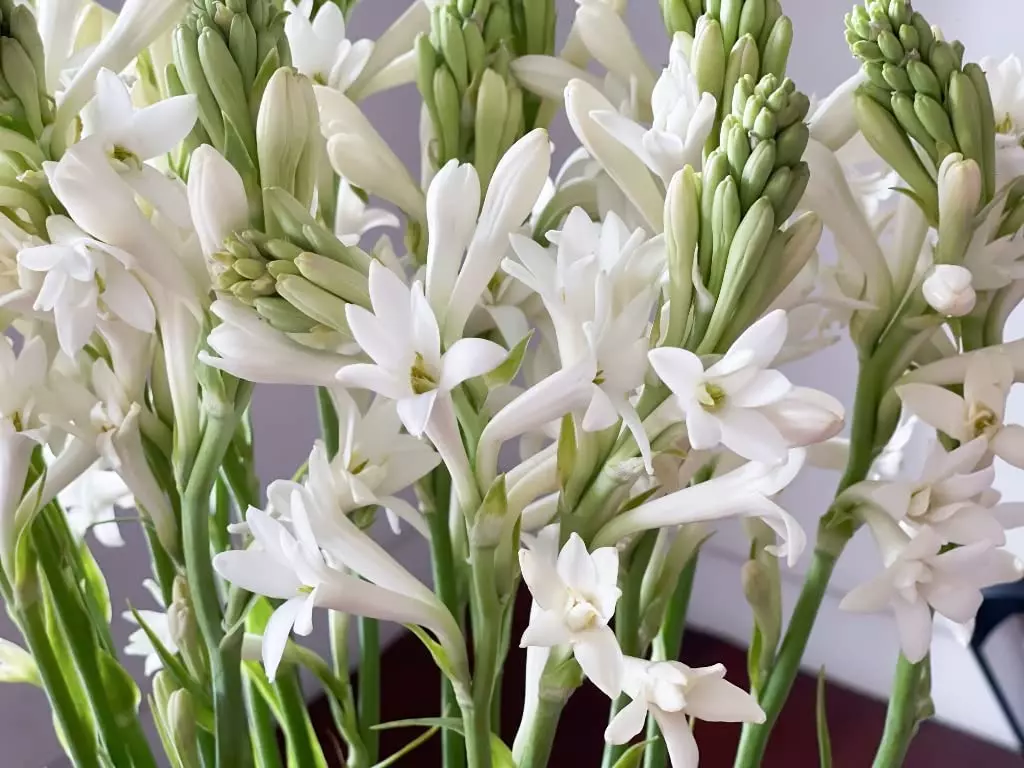
What is the best soil for tuberose?
Soil for tuberose should be very fertile. A humus-rich medium is the best option. The soil has to meet several other conditions as well. It has to be permeable and be non-acidic. Because of this, experienced gardeners add some bark, compost, and calcium fertilizers to their soil mixes.
Tuberose – how to water and fertilize the plant?
Tuberose has a very specific needs about watering and fertilizing. As for the first element, it’s needed only during longer periods without precipitation. That’s when the soil has to be manually watered, making sure to do it only in the morning.
Tuberose should be fertilized only when first flower buds appear on the stem. They require strengthening with substances designed for blooming plants. Regular fertilizing of tuberose should be continued until the plant finishes flowering.
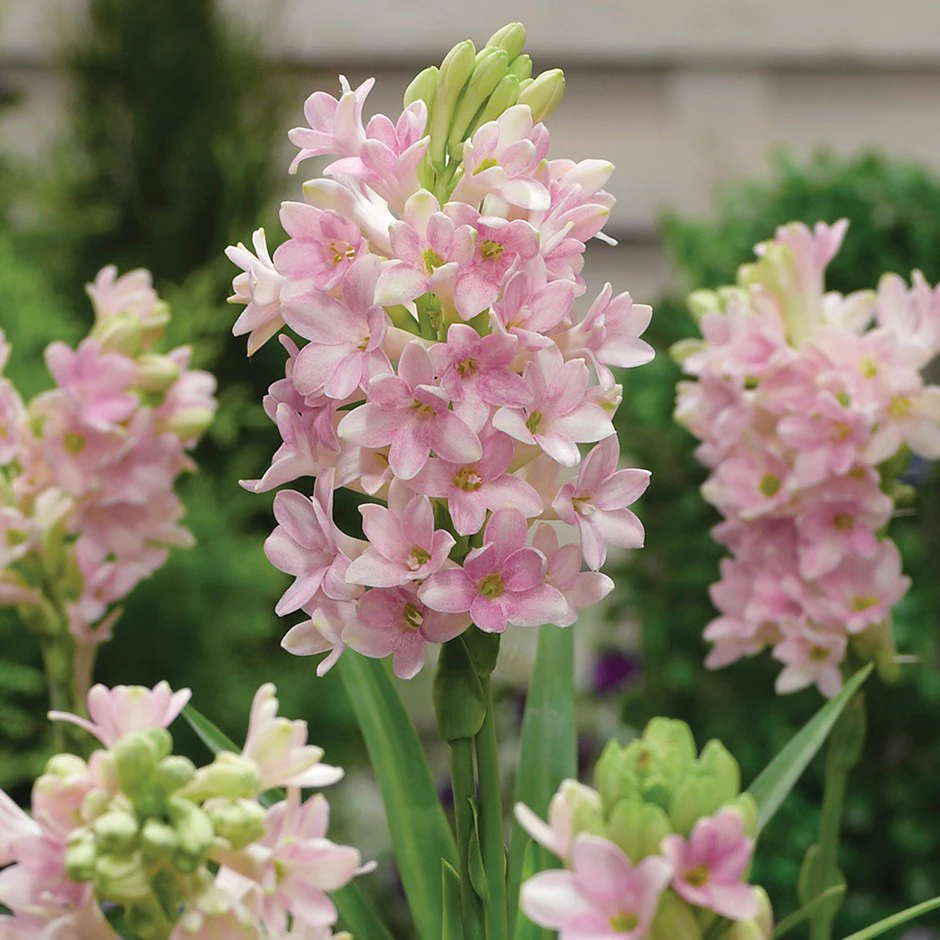
Tuberose – winterizing the plant
Tuberose doesn’t tolerate low temperatures. Because of this, it cannot be left in the ground for winter. The bulbs have to be dug out, cleaned and properly stored. You can use a container filled with wood shavings for this purpose. Dig the bulbs in them. The room in which tuberose is going to be stored should maintain the correct temperature. It shouldn’t be lower than 7-8°C (44.6-46.4°F) or higher than 13°C (55.4°F).
Tuberose bulbs need to be protected from moisture during winter. Excessive water might lead to rot, and if it happens, the plant should be thrown out.
Tuberose – a scent of many purposes
Tuberose flowers are unique because they produce the intense smell that lingers in their vicinity. For this reason, they are used in production of special essential oils. It’s an ingredient of perfumes – loved by mature and confident women. What’s more, this smell can also be purchased as essential oils used in aromatherapy. They carry the following properties:
- stress mitigation,
- relaxation,
- relax for tired muscles.
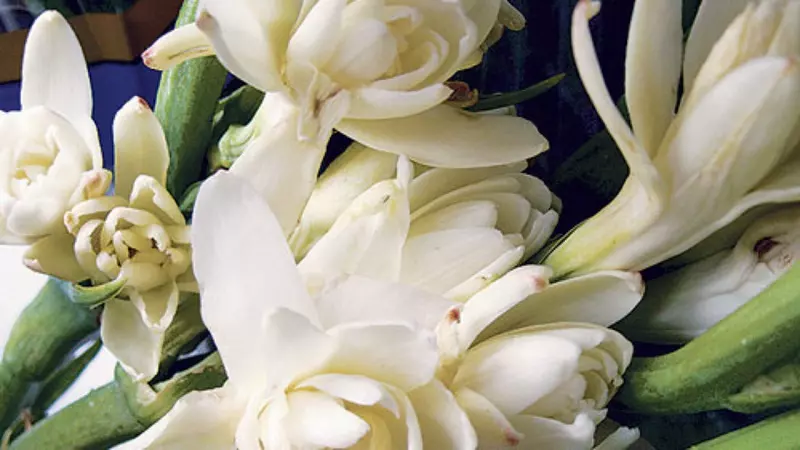
Tuberose – diseases and pests
Tuberose is not particularly vulnerable to pests and diseases. But there are certain dangers that might pose a threat to it. As for diseases, fungal infections are the most common – they attack leaves and the bulb – especially if the soil has been overwatered.
As for pests, aphids are the most commonly occurring. They are easy to get rid of, though. Slugs are much more difficult enemies, as they love eating leaves of tuberose. We recommend reacting as soon as you notice them.
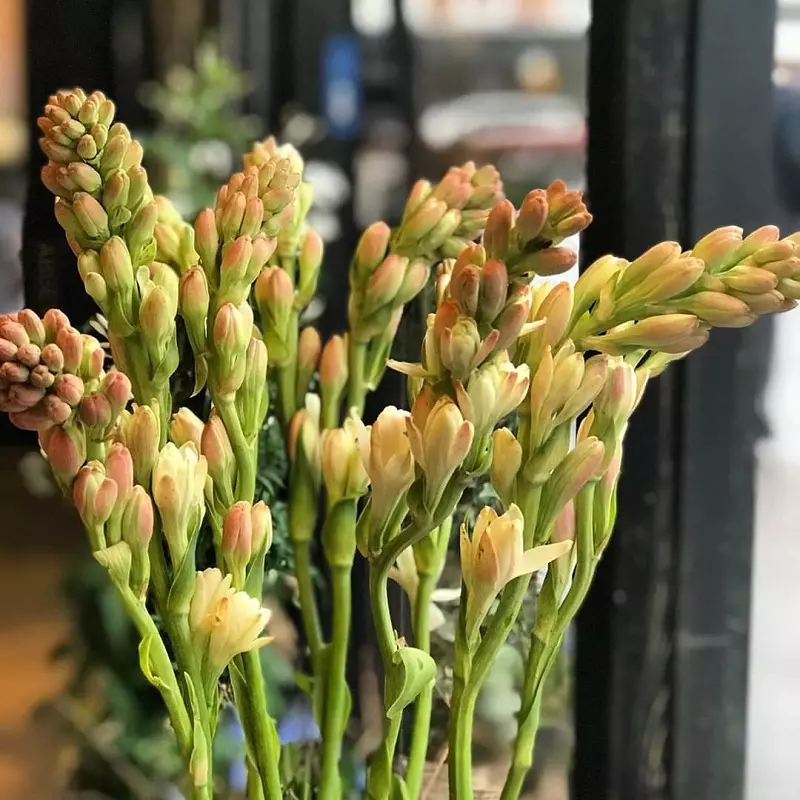
📍 What is tuberose?
Tuberose is a highly attractive plant, valued for its appearance and smell. The flower is recommended to experienced gardeners, mostly because of its high cultivation requirements. It can be grown in flower beds and in pots.
📍 What does tuberose look like?
Tuberose has a quite characteristic appearance. The plant's base is made of long, dense and straight leaves. A stem grows in the middle. Flowers are quite peculiar and resemble small lilies. They can be white, yellow, and pink.
📍 What does tuberose smell like?
Tuberose develops a characteristic intense smell. Some compare it to jasmine combined with lily of the valley. The scent is a bit tropical with a note of citrus. It's considered as perfect for mature, but mysterious women. Tuberose essential oils are also used for relaxation.
📍 When to buy tuberose?
Tuberose bulbs are very popular, thanks to which you can buy them in garden stores and online. Make sure to pick trusted places, to be sure they were stored properly. It's a guarantee that the plant will grow well.
Featured articles




